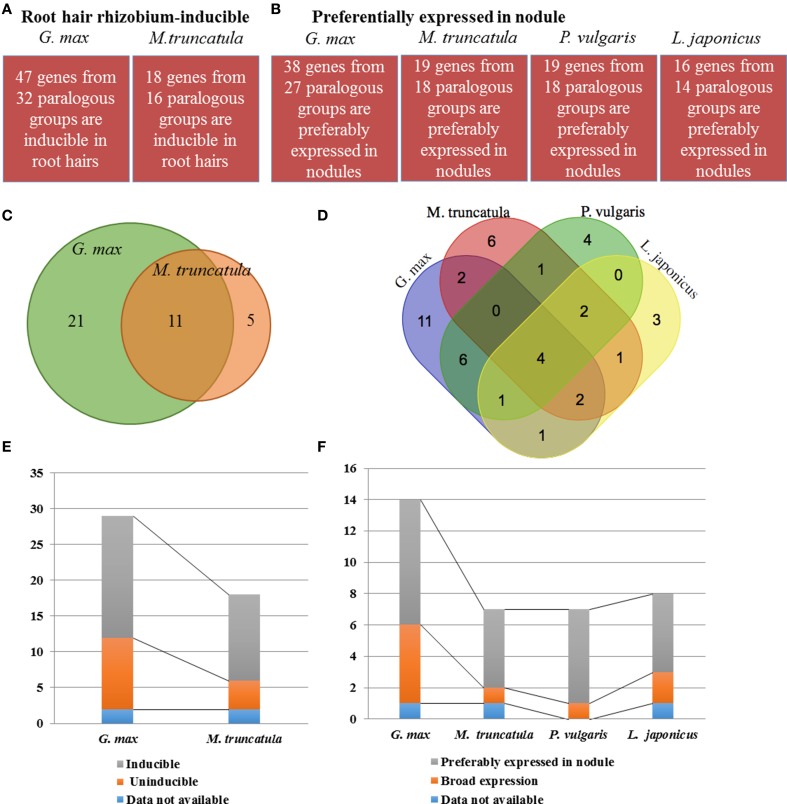Figure 4.
Comparison of the expression profiles between G. max, M. truncatula, P. vulgaris, and L. japonicus orthologous genes and groups during the early (i.e., root hair response to rhizobia inoculation; A, C, E) and late stages of the nodulation process (i.e., preferential expression in mature nodules; B, D, F). (A) and (B), numbers of G. max and M. truncatula genes and orthologous groups induced in root hairs upon rhizobia inoculation (A) and G. max, M. truncatula, P. vulgaris, and L. japonicus genes preferentially expressed in nodules (B; fold-change > 2; Supplemental Table 3 for details). (C) and (D): Venn diagrams showing the overlaps between G. max and M. truncatula root hair inducible (C) and overlaps between G. max, M. truncatula, P. vulgaris, and L. japonicus nodule-specific (D) orthologous groups; (E) and (F): Distribution of the number of G. max and M. truncatula genes which belong to the 11 root hair-inducible (E) and the number of G. max, M. truncatula, P. vulgaris, and L. japonicus genes which belong to four nodule preferential (F) orthologous groups, respectively, according to their expression patterns.

